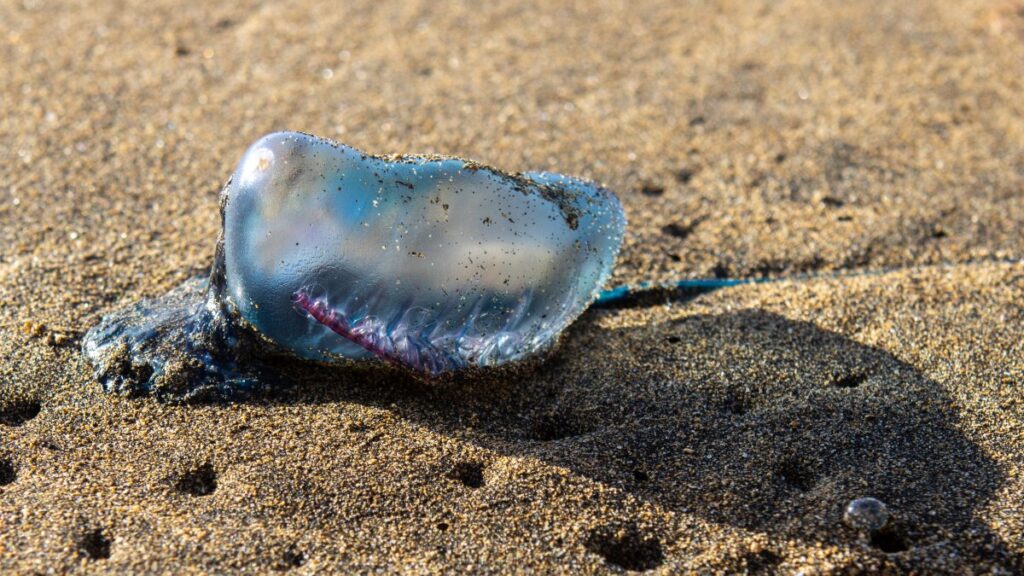Portuguese Man O’ War Sightings in Mexico: What You Need to Know and How to Treat Stings
Recent sightings of the Portuguese Man O’ war, a venomous marine organism, have been reported along the beaches of the Riviera Maya. Though often mistaken for a jellyfish, this floating colony of organisms carries a painful sting that beachgoers should be prepared to avoid—or treat properly if contact occurs.
What Is the Portuguese Man O’ War?
The Portuguese man o’ war is not a single animal but a colony of specialized organisms working together. Its long tentacles can extend up to 30 feet and contain venom-filled nematocysts capable of delivering painful stings. These stings can cause welts, intense pain, and even allergic reactions in some individuals. While encounters are rarely fatal, they can be dangerous, especially for children, elderly individuals, or those with allergies.

Tips to Avoid Stings
- Stay Alert: If warnings are posted about Portuguese man o’ war sightings, avoid swimming or walking barefoot on the beach.
- Recognize the Risk: Even washed-up specimens can sting, as their tentacles remain venomous long after detachment.
- Look Before You Swim: Keep an eye out for their distinctive blue or purple floating “sails” in the water.
What to Do If You’re Stung
If you’re stung, acting quickly and following the right steps can minimize pain and prevent complications:
- Get Out of the Water Immediately: This prevents additional stings and reduces the risk of drowning from pain or shock.
- Rinse with Seawater: Use saltwater to rinse the area thoroughly—do not use freshwater, as it can worsen the sting by activating more nematocysts.
- Remove Tentacles Carefully: Using gloves, tweezers, or a plastic card, gently remove any remaining tentacles. Avoid using bare hands to prevent further stings.
- Apply Vinegar or Baking Soda: Research suggests that vinegar (acetic acid) can neutralize the sting in some jellyfish species. However, it’s debated for the Portuguese man o’ war. If vinegar is unavailable, a paste made with baking soda and seawater can help.
- Manage Pain: Apply heat (such as a hot water compress or soaking the area in hot water, around 45°C or 113°F) for 20–30 minutes. This helps deactivate toxins and reduces pain. Avoid applying ice, as it can worsen symptoms.
- Seek Medical Attention: If the sting covers a large area, causes severe pain, or results in symptoms like difficulty breathing, swelling, or dizziness, seek medical help immediately.
What Not to Do
- Do Not Rub the Area: This can spread the venom and worsen the sting.
- Avoid Urine and Alcohol: These old remedies are ineffective and can irritate the sting further.
- Don’t Ignore Symptoms: Severe reactions require medical attention—don’t assume the pain will subside on its own.
Staying Safe on Mexican Caribbean and Yucatan Beaches
While the sight of the Portuguese man o’ war can be concerning, understanding the risks and knowing how to respond can help ensure a safe beach experience. Always respect local warnings and lifeguard advice, and carry a basic first aid kit when heading to the beach.
By staying informed and prepared, you can enjoy the stunning beaches of the Riviera Maya while minimizing risks associated with marine life encounters.
Discover more from Riviera Maya News & Events
Subscribe to get the latest posts sent to your email.

